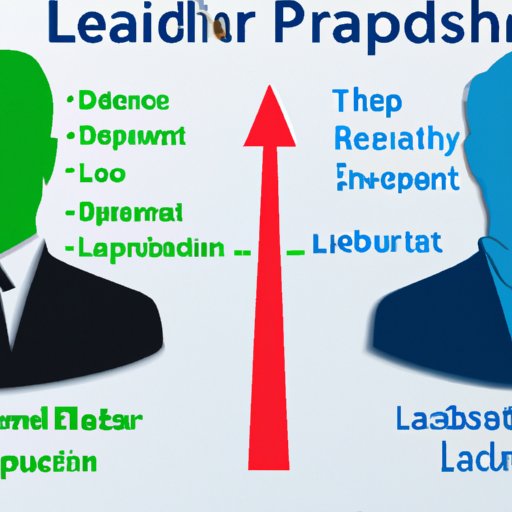Introduction
Leadership styles are the approaches used by leaders to guide their team members, motivate them, and ensure that tasks are completed efficiently. Every leader has a unique style they use in their work environment, but there are several common types of leadership styles. This article will explore the advantages and disadvantages of the different leadership styles and provide examples of how they can be successfully implemented.
Advantages and Disadvantages of Different Leadership Styles
The three main types of leadership styles are Autocratic, Democratic, and Laissez-Faire. Each one has its own set of advantages and disadvantages that must be considered before deciding which style is best for a particular situation.
Autocratic Leadership
Autocratic leadership involves a leader making all decisions without consulting their team. This type of leadership can be beneficial when quick decisions need to be made or when a task requires a specific set of directions to be followed. However, it can also lead to a lack of creativity, lower motivation levels, and poor communication between team members.
Democratic Leadership
Democratic leadership involves allowing team members to make decisions collectively. This type of leadership can foster creativity, increase motivation, and improve communication among team members. However, it can also lead to slower decision-making processes and disagreements among team members.
Laissez-Faire Leadership
Laissez-Faire leadership is characterized by a hands-off approach from the leader. The leader allows team members to make their own decisions and take responsibility for them. This type of leadership can promote independence and creativity, but it can also lead to a lack of direction and team members feeling overwhelmed.

Comparing and Contrasting Different Leadership Styles
When deciding which leadership style is best for a particular situation, it is important to consider the key characteristics of each style. Autocratic leadership is characterized by a leader making all decisions without consulting their team, while democratic leadership involves allowing team members to make decisions collectively. Laissez-Faire leadership is characterized by a hands-off approach from the leader, allowing team members to make their own decisions and take responsibility for them.
When determining the appropriate leadership style for a situation, it is important to consider the team dynamics, the task at hand, and the desired outcome. For example, if the goal is to get a task done quickly and efficiently, then an autocratic leadership style may be more suitable. On the other hand, if the goal is to foster creativity and collaboration among team members, then a democratic leadership style may be more appropriate.

Impact of Leadership Styles on Team Morale and Productivity
The type of leadership style used can have a significant impact on team morale and productivity. Autocratic leadership can lead to resentment and low motivation, while democratic leadership can foster collaboration and increase motivation. Laissez-Faire leadership can lead to confusion and lack of direction, but it can also lead to increased creativity and independence among team members.
Research shows that the most effective teams combine different leadership styles. According to a study conducted by the Harvard Business Review, “Teams that blend autocratic, democratic, and laissez-faire leadership styles tend to be the most successful.” The study found that teams with a mix of leadership styles performed better than those with only one style.

Examples of Successful Leadership Styles in Action
There are many examples of successful leaders who have employed different leadership styles. Steve Jobs was known for his strong autocratic leadership style, while Mahatma Gandhi was known for his democratic style. Mark Zuckerberg is often cited as an example of a successful leader who uses a mixture of autocratic and democratic styles. And Jeff Bezos is a prime example of a successful leader who uses a laissez-faire leadership style.
Conclusion
Leadership styles play an important role in team morale and productivity. Autocratic, democratic, and laissez-faire leadership styles all have their own set of advantages and disadvantages. It is important to understand these different styles and determine the appropriate one for a particular situation. By combining different styles and taking into account the team dynamics and the desired outcome, leaders can create successful teams and achieve their goals.
(Note: Is this article not meeting your expectations? Do you have knowledge or insights to share? Unlock new opportunities and expand your reach by joining our authors team. Click Registration to join us and share your expertise with our readers.)
